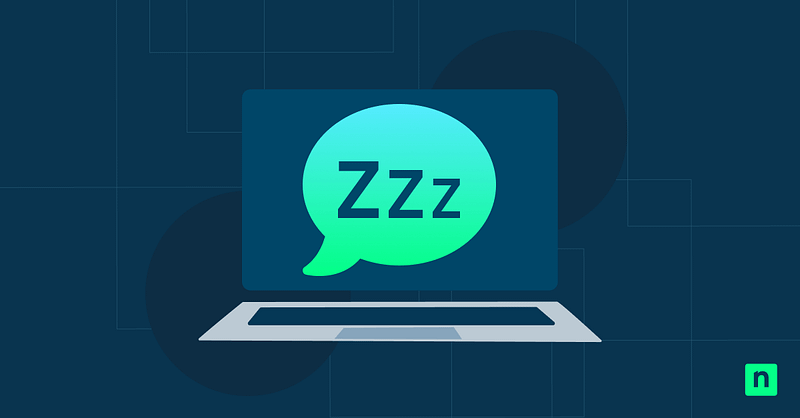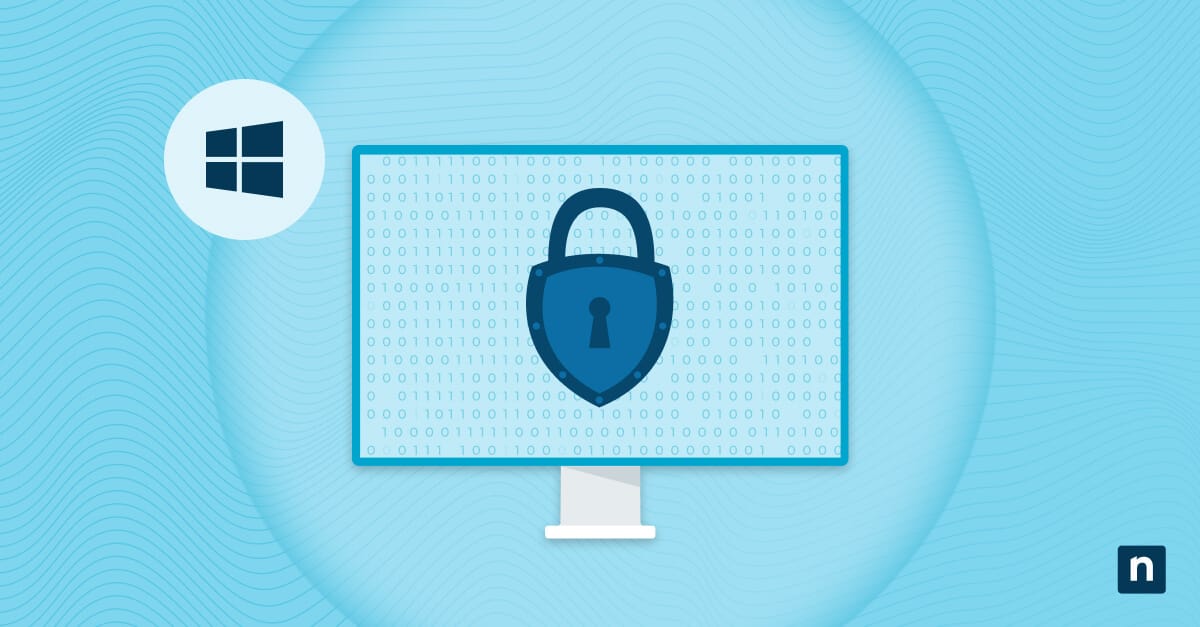In this article, you will learn how to see sleep states in Windows 10. Windows power management goes far beyond simple on/off states. Modern sleep states orchestrate a balance between instant availability and power conservation, directly impacting your system’s performance, battery life, and user experience.
Demystifying Windows device power transitions
Understanding PC sleep states requires exploring the sophisticated power management system built into Windows 10. This complex architecture balances system responsiveness with energy efficiency, creating a seamless experience for users while optimizing battery life and performance.
Basic power state architecture
Windows 10 sleep states operate through a sophisticated hierarchy of power management controls. Global System States (G-States) establish the foundation by controlling platform-wide power usage, while Processor Power States (C-States) fine-tune CPU power consumption. This framework extends to Device Power States (D-States) and Performance States (P-States), creating a comprehensive system that balances processing capability with power efficiency.
Energy consumption levels explained
As your system transitions through sleep states, it progresses from full operation to increasingly deeper power-saving modes:
- Modern Standby (S0ix): Maintains network connectivity while minimizing power usage, ensuring quick resume times for instant productivity.
- Traditional Sleep (S3): Achieves greater energy savings by powering down most components except RAM, preserving system state for faster wake-up.
- Hibernation (S4): Maximizes power conservation by saving the system state to disk and fully powering down the device, ideal for long durations of inactivity.
When your computer enters deep sleep mode, its components work together seamlessly to save power. Storage devices gradually spin down to minimize energy use, network adapters scale back activity while maintaining essential connections, and graphics processors shift to lower performance states based on the system’s needs. This coordinated effort ensures maximum efficiency without compromising functionality.
State transition triggers
The transition between PC sleep states operates through an intricate system of triggers and conditions that respond to multiple factors. While user activity patterns and system idle timers drive initial sleep timing decisions, the process also considers temperature thresholds, hardware conditions, and application behavior.
Types of PC sleep states: From basic to advanced
Sleep states in Windows 10 have evolved to reflect the growing complexity of modern computing needs.
Modern standby capabilities
Modern Standby is a significant step forward in how Windows 10 sleep states manage power and connectivity. Unlike traditional sleep modes, Modern Standby maintains a low-power connected state similar to how your smartphone operates.
Key benefits of modern standby include:
- Instant wake response similar to mobile devices
- Continuous background email and notification sync
- Minimal battery impact during standby periods
- Intelligent network connection management
Component-level power gating
Modern processors implement sophisticated power-gating technologies that enable individual components to enter ultra-low power states. This granular control allows Windows 10 sleep states to optimize power consumption based on specific system demands. When certain components aren’t needed, they can be turned off while keeping essential functions available.
Wake source configurations
Your deep sleep computer needs clear rules about when to wake up. Windows 10 provides precise control over these wake sources, allowing you to balance accessibility with power savings. System administrators can configure wake patterns based on specific organizational needs while maintaining security and efficiency.
Critical wake source considerations include network activity, peripheral devices, and scheduled tasks. Each wake source can be individually configured, creating a customized approach that matches your specific use case while maintaining optimal power efficiency.
Deep sleep computer architecture explained
The architecture behind deep sleep in modern computers represents a masterpiece of hardware and software engineering working in harmony. How your system manages memory, power states, and component behavior during sleep determines both energy efficiency and user experience.
Memory management during hibernation
When your system enters deep hibernation, it executes a carefully choreographed sequence of memory management operations. First, the system takes a snapshot of your RAM contents, compressing the data to minimize storage requirements.
This compressed memory image then gets written to your hibernation file (hiberfil.sys) on the system drive, preserving your work state while allowing for complete system shutdown.
The sophistication of this process becomes evident in how Windows 10 sleep states handle different memory conditions:
- Active memory pages get prioritized for faster wake-up sequences.
- System-critical data receives special handling for reliability.
- Unused memory pages may be excluded to reduce hibernation file size.
- Memory compression algorithms adapt to available storage speed.
Power consumption differences
Deep sleep represents the most efficient power state available to modern computers, consuming near-zero power while maintaining data persistence. The system achieves this by progressively shutting down components in a specific sequence:
- First, external peripherals enter their lowest power states.
- Then, internal components like network adapters power down.
- Finally, core system components enter ultra-low power modes.
Recovery time implications
The maximum power savings come with a trade-off in recovery time. When awakening from deep sleep, your computer must methodically restore the system state through a pre-defined sequence.
Your system follows a precise wake-up choreography:
- Storage controllers initialize first.
- Memory controllers prepare for data restoration.
- System memory repopulates from the hibernation file.
- Drivers and services resume normal operation.
Hardware compatibility factors
Not all hardware supports deep sleep states equally well. Modern systems implement Advanced Configuration and Power Interface (ACPI) standards differently, leading to variations in sleep state behavior. Success depends on several critical factors:
- BIOS/UEFI implementation quality
- Driver compatibility with power states
- Hardware support for various sleep levels
- System component power requirements
Maximizing sleep state effectiveness
Success with Windows 10 sleep states requires careful configuration and monitoring. Proper optimization of these settings helps promote both efficiency and reliability while meeting your organization’s specific needs.
Customize transition thresholds
Power transitions in PC sleep states need careful tuning to balance responsiveness with energy savings. Start by analyzing your typical usage patterns to determine the optimal timing for sleep state entry. When setting up these thresholds, consider factors like application behavior, user activity patterns, and system workload.
Optimize wake parameters
Effective wake parameter configuration allows your deep sleep computer to respond seamlessly to various triggers. Begin by identifying essential wake sources for your environment — perhaps network connections for servers or keyboard input for workstations. Then create a hierarchical wake policy that prioritizes critical events while preventing unnecessary system activation.
Consider these key wake optimization strategies:
- Configure network adapters to respond only to specific packets.
- Set peripheral devices to appropriate wake levels.
- Implement scheduled wake times for maintenance.
- Establish clear policies for wake source management.
Monitor state transitions
Understanding how your system moves through Windows 10 sleep states requires consistent monitoring. Windows provides built-in tools that track transition timing, success rates and potential issues. Regular analysis of these metrics helps you identify problems before they become real issues and impact productivity.
Troubleshoot common issues
Even well-configured sleep states occasionally encounter problems. Successful troubleshooting requires a systematic approach that identifies root causes rather than just addressing symptoms.
When issues arise, follow this structured approach:
- Review event logs for sleep-related errors.
- Check driver compatibility with power states.
- Analyze application sleep behavior.
- Test hardware component sleep support.
Mastering Windows 10 sleep states
Mastering Windows 10 sleep states enables IT professionals to strike the perfect balance between system availability and power efficiency. Take control of your power management strategy today by implementing these sleep state optimizations to enhance both performance and energy conservation across your organization’s devices.
NinjaOne’s remote monitoring and management platform lets you easily manage Windows, Apple and Android devices through an intuitive web interface. With deep Windows power management integration, you can monitor hardware, track battery health, and automate tickets for battery replacements. Try NinjaOnefor free and upgrade your device management today.








